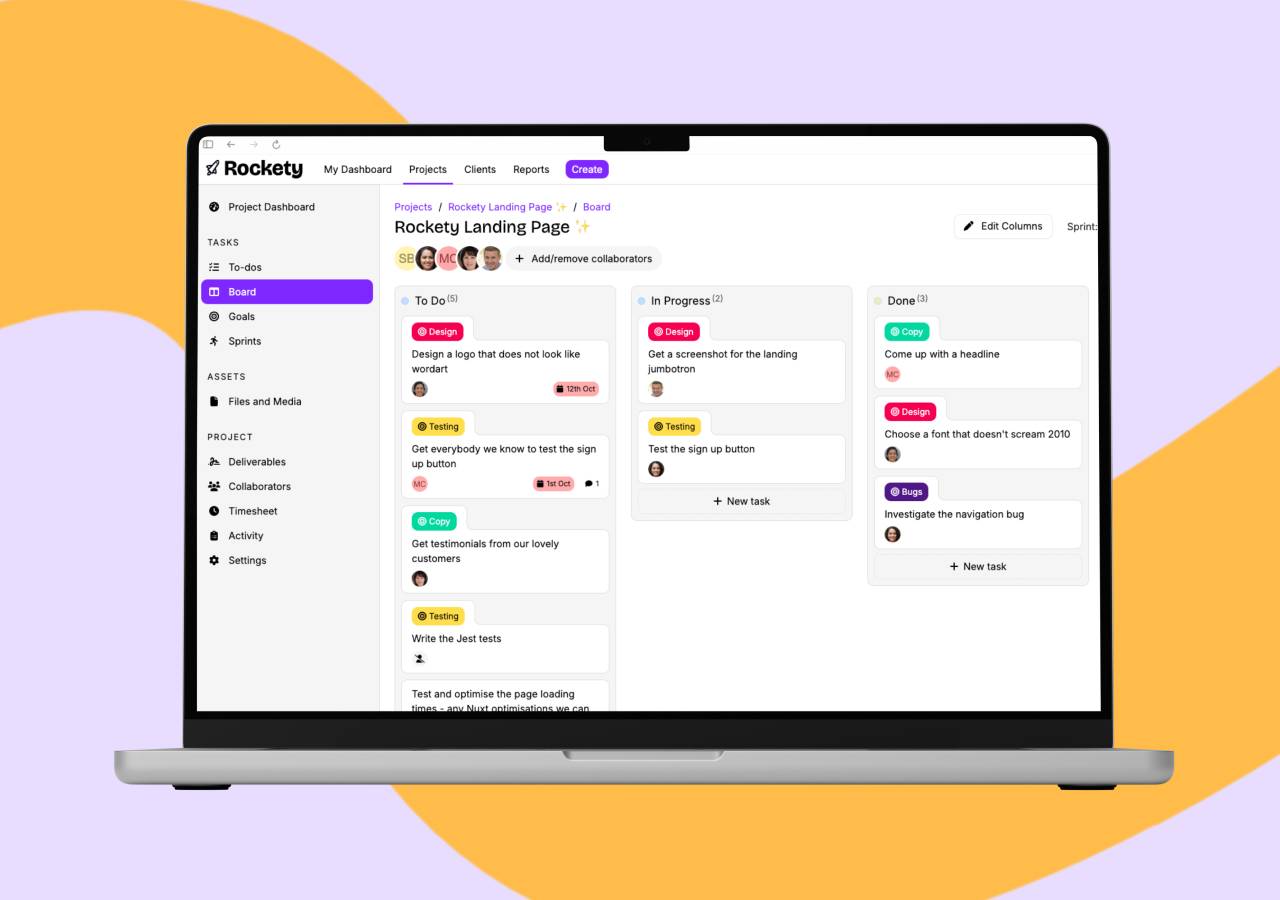When it comes to estimating the effort required for tasks in a project, teams often face a choice: should you use time estimates or story points? In Rockety, you can use either method, but we recommend picking one per project to keep things consistent. Both approaches have their merits, and understanding the differences can help you decide what works best for your team’s workflow and goals.
What Are Time Estimates?
Time estimates express the expected duration of a task in real-world terms, such as hours, days, or weeks. For example, you might estimate that writing a blog post will take 3 hours or debugging a complex issue might take 2 days.
Benefits of Time Estimates
- Real-World Comparisons: Time estimates make it easy to compare your planned effort with actual time spent, especially when paired with Rockety’s timesheets feature.
- Clear Communication: Non-technical stakeholders often find time estimates easier to understand.
- Detailed Scheduling: Time estimates help with precise planning when you need to create detailed schedules or manage resources.
However, time estimates can be challenging to get right. Factors like distractions, unexpected complexities, or differences in individual working speeds can lead to under- or overestimations.
What Are Story Points?
Story points take a different approach by measuring the effort, complexity, and uncertainty of a task relative to other tasks. Instead of predicting how long a task will take, you assign a point value that reflects its difficulty. For example, a simple bug fix might be 1 point, while implementing a new feature might be 8 points.
Why Agile Teams Love Story Points
- Focus on Relative Effort: Story points remove the pressure of precise time predictions and instead focus on comparing tasks.
- Encourage Team Collaboration: Estimating with story points often involves discussions among team members, leading to a shared understanding of tasks.
- Uncertainty-Friendly: Story points work well when there are unknowns, as they account for effort, complexity, and risk.
- Velocity Tracking: Over time, teams can track their velocity (the number of points completed in a sprint), which helps with forecasting future work.
Why Fibonacci?
Many teams use the Fibonacci sequence (1, 2, 3, 5, 8, 13, etc.) for story points. The gaps between numbers grow larger as the tasks get more complex, reflecting the increasing uncertainty and effort required for bigger tasks. This helps avoid getting bogged down in overly precise estimates for large or ambiguous work.
Which Should You Use?
The choice between time estimates and story points depends on your team’s needs:
Use Time Estimates If:
- Your team works on projects with clear, predictable tasks.
- You need detailed scheduling or want to compare planned vs. actual effort.
- Stakeholders prefer time-based reporting.
Use Story Points If:
- You follow agile methodologies, especially Scrum or Kanban.
- Your tasks involve uncertainty or complexity.
- You want to focus on team velocity and iterative progress rather than precise deadlines.
How Rockety Supports Both Approaches
Rockety allows you to choose between time estimates and story points at the project level. If you opt for time estimates, you can leverage our timesheets feature to track actual effort and compare it to your original estimates. This is great for teams focused on resource management and time tracking.
If you prefer story points, Rockety helps you set and track your team’s velocity, making it easier to plan sprints and forecast future work. Whichever method you choose, Rockety’s flexibility ensures your team stays aligned and productive.
How to Set Up Time Estimates or Story Points in Rockety
- In your Rockety project, head to the project settings.
- Under "Timesheet and Estimates", choose whether to use time estimates or story points (or both, if you feel really adventurous!)
- You can still enable Timesheet when you use story points, but you won't be able to compare the estimated time with the actual time spent.
Final Thoughts
Whether you’re managing tasks with time estimates or story points, the key is consistency. Decide what works best for your team’s workflow, and stick with it to avoid confusion. For teams that need precise tracking, time estimates offer a clear path forward. For agile teams focused on collaboration and adaptability, story points are a powerful tool.
Rockety is here to support you, whichever method you choose. Ready to optimize your project planning? Start using Rockety today!

Looking for a new project management solution?
Rockety is a modern, easy-to-use project management tool that helps you get your projects done faster. Click here to get started!